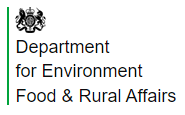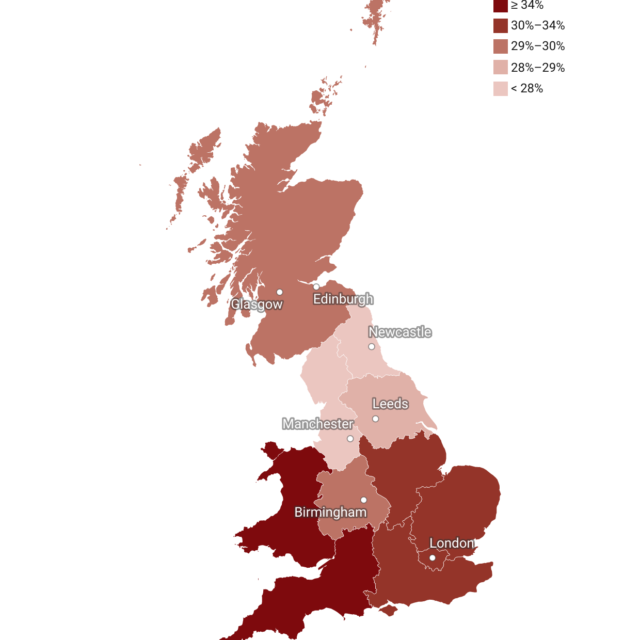Estimating Food and Drink Demand Elasticities
 Pub. Date
Pub. Date
25 April, 2022
 Pub. Type
Pub. Type

Main points
- In June 2019 the UK government commissioned an independent review of England’s food system, in order to develop an integrated National Food Strategy. The aim was to understand how the production, distribution and consumption of food affects our welfare and health, including their impact on the environment. The formulation of a food strategy requires a clear model of consumer demand, in order to understand how changes in market prices and consumers’ incomes are likely to affect patterns of consumption of food and drink. Such a model would help us understand how market forces might affect health and to formulate appropriate policy responses. For instance, would growing income inequality combined with an increase in food prices result in worsening diet and increased obesity? If so, what policy interventions might be best designed to correct these? Further, it is possible that our food supply chains may be disrupted by current or future shocks: these might range from UK’s exit from the EU, the effects of the COVID-19 pandemic and war in Ukraine. Once again, an accurate model of demand is necessary for the design of effective policy corrections.
- This report provides a model of consumer demand for food and drink. Our focus is on estimating the elasticities of demand, which measure the sensitivity of the demand for a good to changes in prices or income. Estimating the price elasticity of demand for an individual item of food or drink allows us to assess how its demand varies when its price changes. Estimating a demand system for all food items allows us to assess how demand for various items changes, not just in response to their own prices, but also in response to changes in prices of other items. The expenditure elasticity tells us how demand for individual food items varies with changes in the consumers’ overall expenditure on food: consumers on the lower end of the income distribution might have pattern quite different from those at the top percentiles. These estimates of consumer elasticity offer valuable insights. For instance, they enable policy-makers to anticipate the likely impact of food price inflation on patterns of consumption and nutrition. If the policy aim is to use selective taxation to alter the pattern of consumption towards a healthier nutritional balance, the estimated elasticities guide the choice of food items to be taxed. Expenditure elasticities of demand alter policy makers to the impact of changes in the income distribution.
- Following UK’s exit from the EU and from the constraints of the Common Agricultural Policy, it would be helpful to understand how the UK’s ability to set its own tariffs on food imports might affect prices and consequently food consumption. Brexit, and the lingering effects of the COVID-19 pandemic will also cause changes in migration flows which will affect many aspects of the food system from farming to restaurants. The relatively slow recovery from the recession following the 2007/8 financial crisis, and the austerity policies that followed, had divergent implications for households in different parts of the income distribution.
- Several government policies have recently sought to alter peoples’ eating behaviour in the last decade. For example, the ‘5-a-day’ policy was introduced to encourage people to consume more fruit and vegetables, and information campaigns have highlighted the dangers of high salt and saturated fat consumption. In 2018 the government introduced a ‘sugar tax’ on sweetened drinks to reduce sugar consumption. Also, following consultation with industry, the government will restrict promotions on food and drinks high in fat, sugar and salt (HFSS) from October 2022 as part of the government’s strategy to tackle obesity.
- This study uses systems of demand equations known as the Almost Ideal Demand System (AIDS) to estimate empirically demand elasticities, applied to data drawn from Kantar’s grocery market share database, a representative survey of 30,000 UK households. We investigate the extent to which consumption of food products changes in response to changes in their prices, as well as prices of other food products. This allows us to uncover ‘substitution’ or ‘complementarity’ relationships across food products, that is, to what extent goods are likely to substitute for one another in the event of a price change, or whether products are likely to be consumed together.
- We compare patterns of purchase for consumption at home with those for ‘out-of-home’ consumption, drawing again on data from Kantar. We investigate whether the sensitivity of demand of food products to prices varies by socio-demographic group. Finally, we estimate ‘nutrient elasticities’ which measure the effect of changes in food prices on intake of a range of nutrients. This allows us to trace the impact of a change in price of any food category on, for instance sugar, fat or salt consumption and allows us to calibrate implications of hypothetical policy scenarios.
- This report is organised as follows: Section 2 describes the data we use and provides some descriptive statistics; Section 3 describes the methodology for estimating demand elasticities; Section 4 presents our empirical estimates for price and expenditure elasticities of demand; Section 5 shows the results for the nutrient elasticities of demands; Section 6 examines some policy scenarios, and Section 7 concludes.

Funders

















